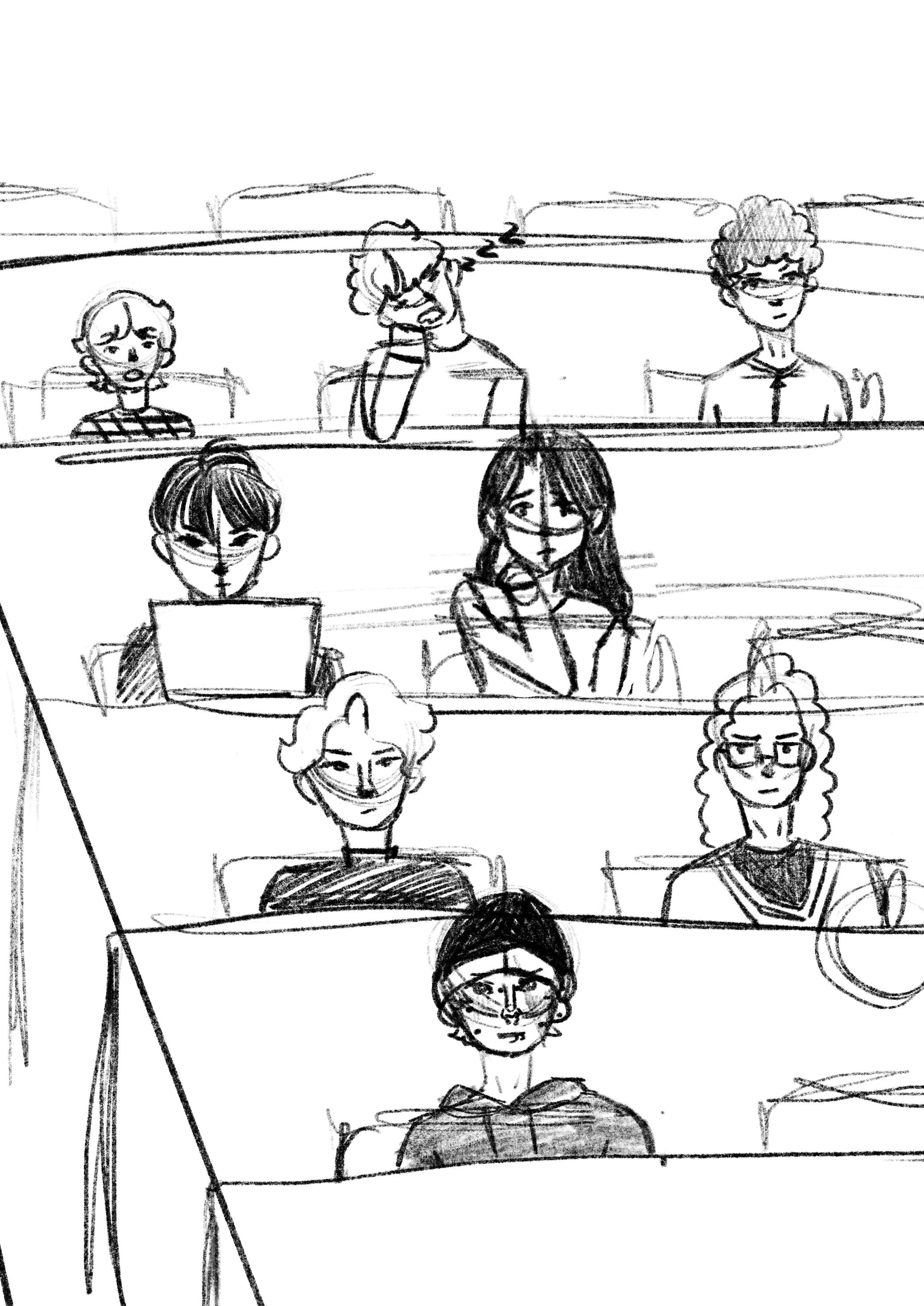
5 minute read
The power of a ponytail
THE POWER OF A PONYTAIL
HOW A FEMALE STUDENT BATTLES THE INEQUALITY OF A CLASSROOM
BY GIA KRUPENS
When Alyssa Esparza sits down, the first thing she does is tie up her hair.
She uses a band to secure her brown strands into a ponytail, leaving behind a few loose hairs to frame her face. It’s a style that she replicates in her lectures, labs, and American Society of Civil Engineers (ASCE) meetings. She’s one of the few in her classes that sports this look- because in most of her classes, she’s one of the few women in the room.
As she gets comfortable, Esparza taps her fingers against her legs. She’s donned a bright blue sweater with some casual black pants and sneakers. Nothing too fancy for a Saturday on campus. She’s here for an ASCE meeting, an organization that performs community services and focuses on getting students into careers in the civil engineering field.
Ezparza is a second-year civil engineering major at Long Beach State- a major that is currently dominated by men. According to the Zippa: The Career Expert website: 83.6% of civil engineers in the United States are men. Only 16.4% are women.
“It’s kind of a scary statistic to be honest,” Esparza said. “You hear it’s really that bad, but you don’t think it’s really that bad.”
Esparza laughs as she says it, but deep down, it’s not really a joke. Women in STEM have historically been the minority; even though some majors, like kinesiology and animal science, are seeing a significant change in becoming female-dominated, there are still plenty of majors that find men to be the majority- including engineering.
As Esparza talks, she recalls an experience that she had in a class freshman year. In a class of 20 students, Esparza was the only woman.
“The doorway to get into the class had the men’s restroom sign over it,” Esparza said. “They were like ‘Is she allowed to come in here?’ - it was so bad. I was the only girl in the class in total, they made it super clear, they pointed it out a lot.”
Experiences like these shape the college experience for women in male-dominated majors. Esparza describes a few different stories of times that she’s been singled out as a female student in the classroom: the surveying equipment being too tall for her because her lab partners were all male, never seeing the name of a female engineer being taught in a classroom, and conversing with an argumentative classmate about which direction north is in (spoiler alert: he was wrong).
“You feel singled out sometimes,” Esparza explains. “You feel like you shouldn’t be there.”
But it’s not all negatives in the engineering field for women. A lot of these experiences are what help women in STEM fields form connections. The bond that female students form by sharing their lived experiences creates a sense of camaraderie within the community. That feeling of being singled out that Esparza talks about goes away when she’s with her female friends.
“You realize that you’re all going through the same thing,” said Esparza. “When you know that other people are in the same boat it makes it more motivating.”
She tells about how her STEM friends help her through tough times in classes. In Esparaza’s life, women support each other by giving reminders about upcoming assignments and sitting together in classes. She explains that having a “fellow woman” in her classes provides comfort to her.
The bright side is that there has been an increase in females in the civil engineering field. According to the Cambridge Occupational Analysts, from 2007 to 2014, there was a 16% increase of women in the field. This is good news for the future of engineering and the little girls currently out in the world that are hoping to join the field.
“It’s important to talk about,” said Esparza when asked about the conversation around women in engineering. “I don’t know how much I have to offer towards it, but it’s super important.”
One of the organizations on campus that focuses on this conservation is the LBSU chapter of the Society of Women Engineers. This organization not only provides students with a safe space for female engineers to connect with each other, but also helps female engineers in the field find careers. It promotes career opportunities for women to create diversity in the field.
Starting the conversation is what brings awareness to the gender inequality present in the field. So that next time when another woman walks into class, maybe the surveying equipment is the right height and there’s no argumentative classmates questioning her on directions.
Esparza walks out of the building and heads down the stairs towards lower campus to her day of ASCE meetings. She tightens her ponytail one last time, preparing herself for a day of hard work.










